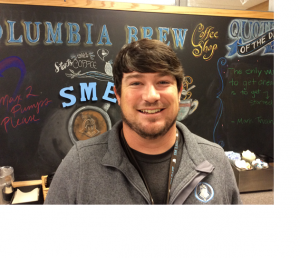 Andrew Walter, Shawnee Mission East High School
Andrew Walter, Shawnee Mission East High School
I am in my second year of implementing simulation-based methods, and I’m thrilled with how it has enhanced my AP Statistics course. My struggles teaching the course are probably familiar to others, and include: difficultly teaching vocabulary, difficulty spiraling review topics, and difficulty helping students grasp some of the key topics in ways that indicate true understanding. Using the simulation-based inference methods throughout the school year has helped me address all of these concerns and more. I will briefly explain how I use this method in my class, and then comment specifically about how it has helped.[pullquote]Simulation activities are a perfect way to blend “hands-on” learning with using technology.[/pullquote]
- Using a simulation-based inference activity is a great way to start the year. This year, I did a simulation-based activity on each of the first 3 days of class. I was able to introduce several key concepts to my classes within the first week of school, including: statistical significance, sampling distributions, p-values, null hypothesis, random assignment, and random selection. Many statistics teachers will agree that these are usually the most difficult concepts for students to understand. By beginning the year this way, we are able to introduce these concepts early, so that they can be revisited constantly over the course of the year. In previous years, I would not introduce p-values and statistical significance until well into the second semester of my course. This gave my students relatively little time to grapple with the meaning of these terms, and their learning had to be on a schedule that I had set for them. By introducing the key terms up front, it allows students to experience “a-ha” or “lightbulb” moments throughout the year as each of the key concepts is revisited.
An additional benefit to beginning the year this way is that it shows students immediately that the practice of statistics is about trying to answer questions that arise from real problems. The examples that we do are based on real data. Hence, students are doing the real work of statisticians from day one of the course. Finally, starting the year this way allows us to establish a framework for the rest of the course. I like the 6 Step Investigational Framework used in ISI by Tintle, Chance, Rossman, et al. By going through the six steps of the framework early in the year, I can then organize the rest of my AP class around this framework. Whereas before I found myself making abrupt shifts between topics, I’m now able to introduce new material as focusing on details of concepts the students have already been informally introduced to within the framework. My hope is that students will have a better idea of the “big picture” while they are working through the details of each chapter.
-
Simulation activities are a perfect way to blend “hands-on” learning with using technology. Having students perform simulations by hand is a terrific way to help them understand concepts like sampling distributions viscerally. I try to structure each activity we do in the following manner:
- Simulate 1-5 trials individually
- Graph class results
- Use technology to gather many more simulated samples In my district each student is given a laptop. I scaffold the support I give them when using technology to set their simulations up. At the beginning of the year, I walk them through the computer applets as a group. By the end of the year, however, I find that having students set up the simulations on their own is, itself, a nice method of assessing their understanding. If your students do not have access to computers, consider creating screen casts that they can watch on their phones or on library computers.
- Simulation based activities make great introductions for the different types of data we investigate in AP Statistics. For instance, in my class we begin by looking at distributions of one categorical variable. When we shift to quantitative variables, we start by posing a problem that can be investigated using simulation. I’ve found that this helps my students internalize the difference between the two types of variables (we only differentiate categorical and quantitative in AP Statistics) by necessity– the methods they were using before don’t allow them to answer the problem they now face. One skill that my students have particular difficulty with every year is “choosing” the correct inference method. Using the simulation activities throughout the year will give the students a head start on this. It will also help them see why we need to distinguish each of the inference procedures from each other.
- Simulation-based activities are the perfect opportunity to continuously review material. This year, I have decided to do a simulation based inference activity after each of my chapter tests. My hope is that the specific information that we just covered during the chapter will be placed in context of the big picture through the activity. This way, I will be able to make absolutely sure that students are hearing about key concepts such as random assignment, statistical significance, and scope of inference every couple of weeks at most. In the future, I am considering using simulation activities as an assessment itself. When I find myself falling into a rut of lecture, quiz, test, and move on, having a simulation-based activity built into the schedule is a breath of fresh air for both my students and me. For this reason, I recommend that you schedule the activities well in advance, and try to stick to that commitment. This is particularly true if you are reliant upon checking out computer labs or mobile carts when your students use computers.
